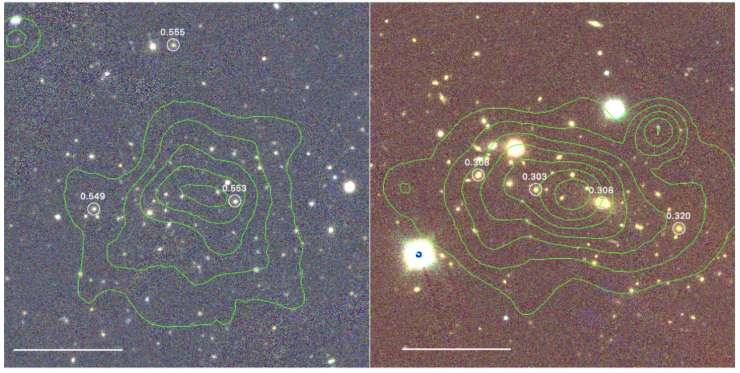Prof. David Wittman Awarded Hubble Space Telescope Time to Study Collisions of Galaxy Clusters


Prof. David Wittman was awarded 8 orbits of Hubble Space Telescope time to study collisions of galaxy clusters. These are the largest masses in the universe and a large fraction of their mass is dark matter. Hence, merging clusters can be thought of as "large dark matter colliders" probing the properties of dark matter in ways that Earthbound colliders cannot.
A normal cluster has X-ray-emitting gas, dark matter, and galaxies occupying the same space. In a collision, the two gas clouds exchange momentum to a far greater extent than the galaxies and the dark matter. Hence, the gas will be between the two galaxy groups if there has been a recent collision. Wittman has developed a new method of searching for these rare situations. In the figure, the contours show the gas distribution (from the Chandra X-ray Observatory) which indeed peaks between the two galaxy clusters. Labeled circles indicate galaxy redshifts, which is a proxy for distance from us. The fact that the two galaxy groups in each collision share a common redshift is confirmation that they are physically associated rather than merely projected together along the line of sight. The bar is 1 arcminute long.
Published: October 10, 2022, 2:32 pm
